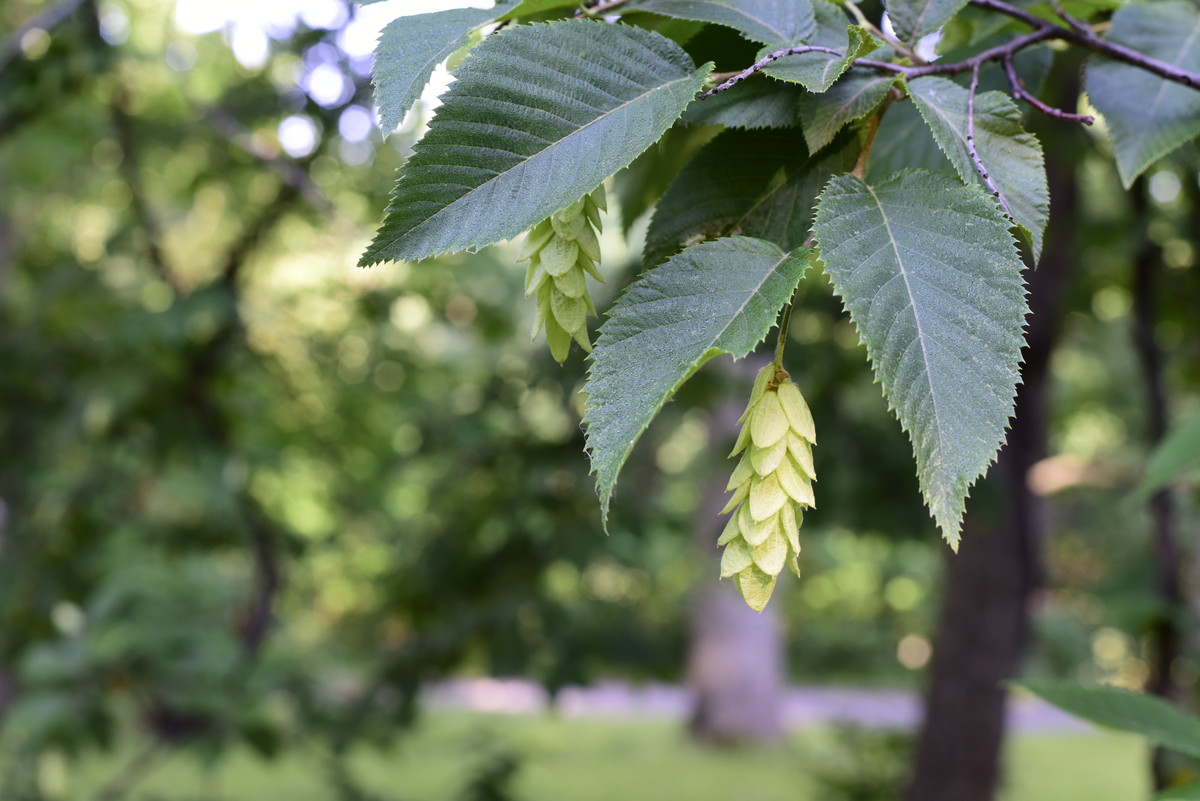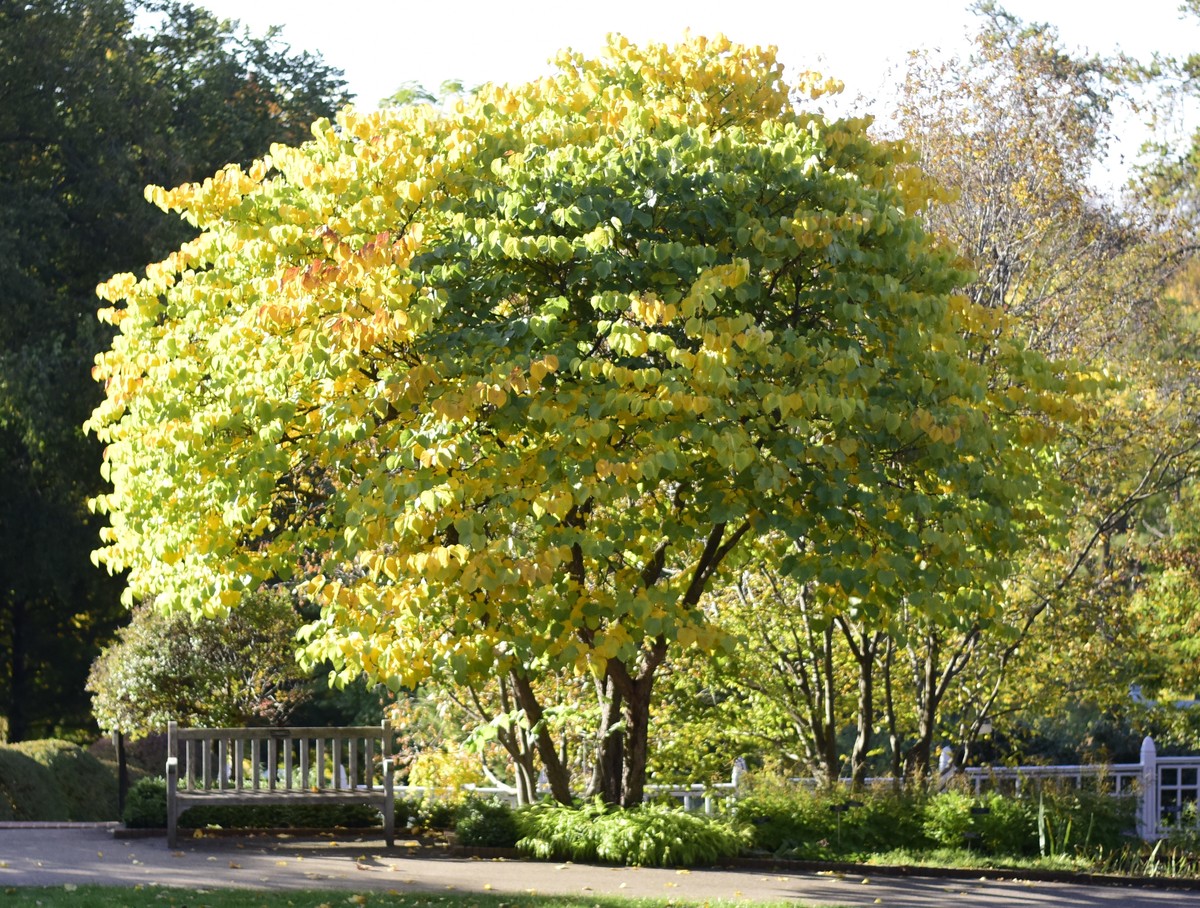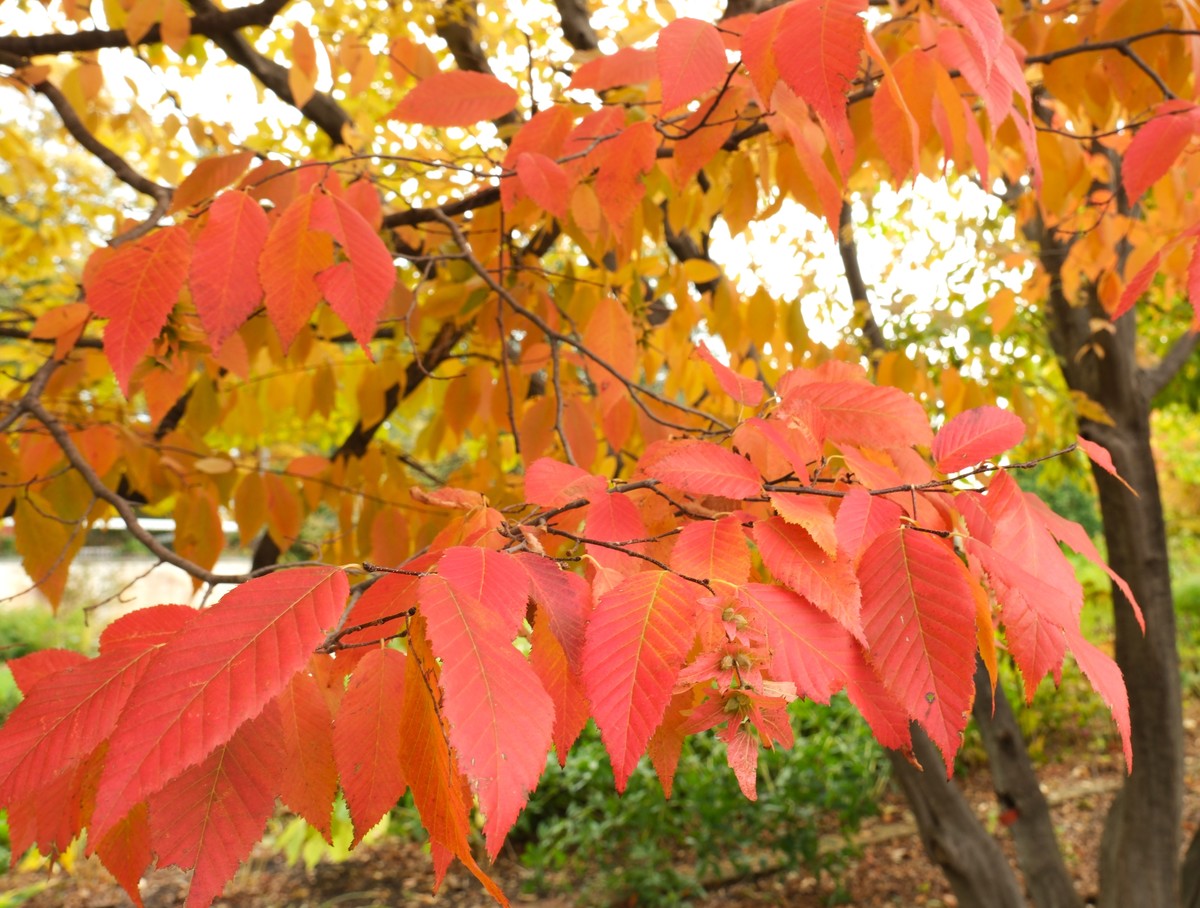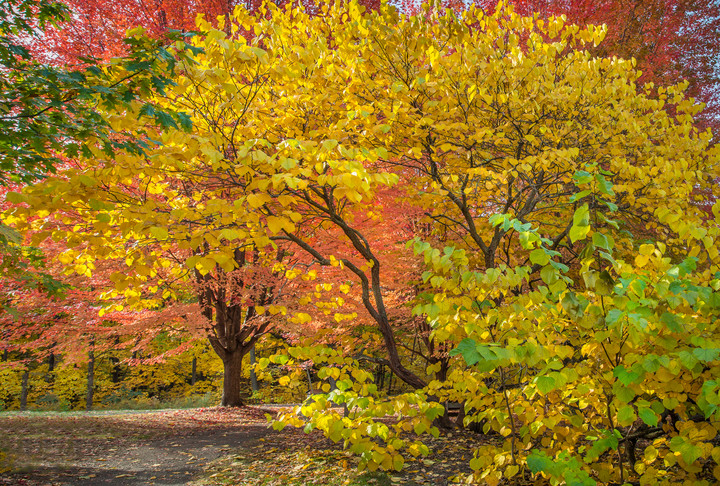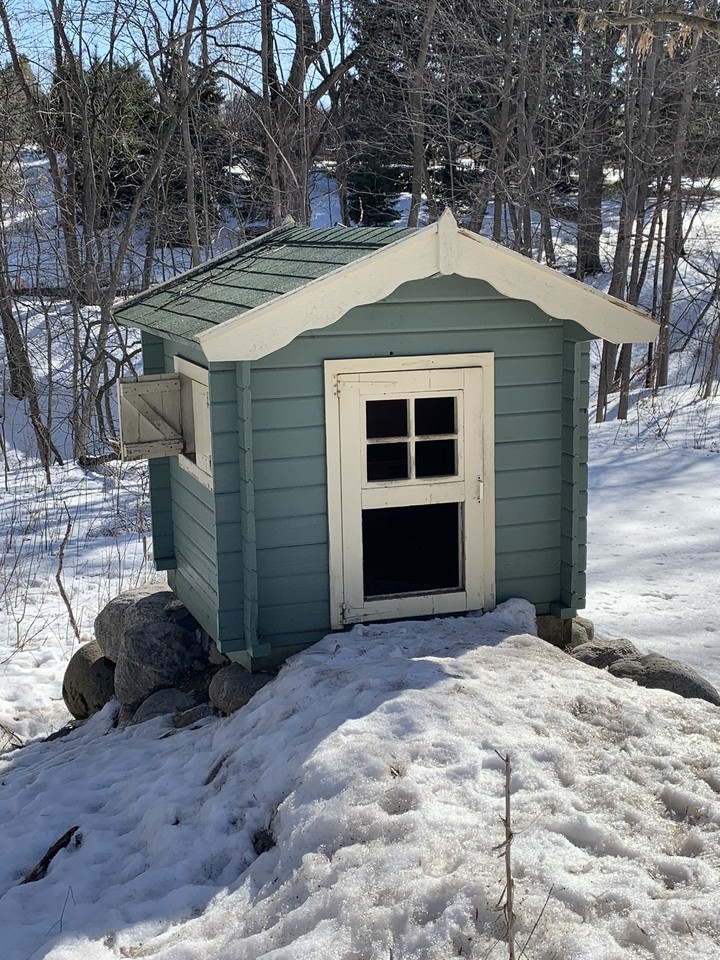
Along Three-Mile Drive with a parking lot
Find it with Google
The Pillsbury Shade Tree Exhibit consists of 12 interpretive stops and includes over 40 species or cultivars of trees and is designed to guide visitors through the process of selecting a shade tree for their yard or street.
Children are always attracted to the collection of small playhouses in the Shade Tree Exhibit as well as the delightful tree house that surrounds the trunk of an old red oak (Quercus rubra). The red oak was struck by lightning in 2001, and the trunk is all that remains. A new circle of red oaks now surrounds the tree house and will one day enclose the space, hiding the tree house within the branches.
Visitors can explore detailed information to decide which trees provide the ideal amount of shade, which tree has the best sensory qualities, fastest growth and more.
12 Considerations for Tree Planting
- Shade Quality — Sit beneath a tree that provides light shade or dark shade to decide which you like best.
- Growth — Check out the “Birthday Pole” which marks the growth of fast- and slow-growing trees over five-year increments. Slower-growing trees such as oaks and sugar maples are generally longer-lived and sturdier.
- Sensory Qualities — Listen to the rustle of the aspen leaves and smell the flowers of the catalpa. What sensory qualities in a tree are important to you?
- Shape — Trees can be rounded, conical, spreading and upright in shape. What shape tree would be the best fit for your space?
- Shade and Temperature — One of the playhouses is placed in the shade and one in direct sun. They almost always demonstrate a 10-degree difference in temperature.
- Alerts to Disease Damage — Some trees are more disease-resistant, while others need to be carefully monitored for signs of disease.
- Method of Planting — Trees are available commercially as bare root saplings, balled and burlapped, containerized or as mature trees planted with a tree spade, but there is little difference over time. A small root tree will catch up to a large tree-spaded tree as it rebounds from transplant shock.
- Messiness — All trees “shed” leaves and are messy to some degree but some are “messier” than others. Do you love raking leaves in the fall?
- Where to Plant — The best place to plant for summer shade and winter warmth is west and southwest of your home.
- Color — What is the summer color of the foliage? Dark green, bluish green? What of the fall color of the leaves, the winter bark texture and color and the spring bud break color? Don’t forget to consider blooms — even a maple tree can be quite stunning in bloom.
- Tree Identification — Test your knowledge of trees by looking at various leaves.
- What Happened Here? In 2001, a severe lightning strike hit the old red oak (Quercus rubra) that housed the tree house. Since that tree was destroyed, a circle of young red oaks was planted around the tree house and will soon enclose the tree house.
Garden Plants
If you're looking for the full list of plants available in the garden, please check out our Plant Finder where you can search by location.
- Anise magnolia (Magnolia salicifolia)
- Black gum (Nyssa sylvatica)
- Blue beech (Carpinus caroliniana)
- Eastern redbud (Cercis canadensis)
- Ironwood (Ostrya virginiana)
- Mountain silverbell (Halesia tetraptera)
- Northern catalpa (Catalpa speciosa)
- Trembling aspen (Populus tremuloides)
- Tulip tree (Liriodendron tulipifera)
- Yellowwood (Cladrastis kentukea)
At-Home Gardening & Care
Visit the exhibit to learn more about selecting shade trees for your yard! To learn more about shade tree varieties and care, visit Minnesota Hardy
